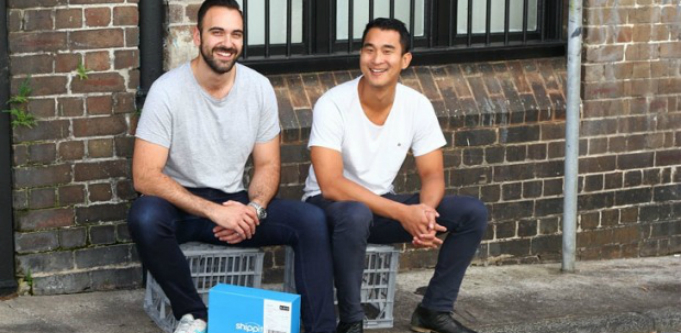
[Left to right] Shippit co-founders William On and Rob Hango-Zada
Australian retailers that focus on remaining relevant to their customers and “capture the spirit of innovation” will be the ones that get ahead, according to Myer chief executive Richard Umbers.
Speaking at InnovAction’s ‘Fireside Chat’ event in Melbourne last week, Umbers said innovation isn’t limited to the garage of some tech savvy startup founders; as a long established retail giant, Myer has had to change and adapt to the evolving digital landscape.
“Around the world, there’s a new retail model that’s evolving,” he said.
“How do you capture the spirit of innovation?”
Having attended the same event, Shippit founder Rob Hango-Zada says local retailers of all sizes have a real opportunity to compete with major global companies like Amazon if they embrace the right technology and get their digital strategy right.
“In the old days you had to build out the tech to compete,” Hango-Zada told SmartCompany.
But with the rise of startups and new tech coming out everyday, Hango-Zada says there is immense opportunity for retailers to achieve high growth and gain a competitive edge by getting smarter about the systems and processes they use.
In Australia alone, the APIs coming out of the fintech sandbox give local retailers a chance to become early adopters of new payment methods, fraud and risk prevention systems and other general services.
Differentiating customer experience, e-commerce and digital will be essential for every retailer, said Umbers.
“How do you reinvent the business model to be much more relevant to the customer?” he said.
From new online retailers to more established ones, Umbers said it’s critical to have an operations model that can adapt to “nimble customer centric change”.
In this digital era, he says the customer is always changing.
As such, Myer’s new retail model has four key areas: high customer centricity; enabled by data and technology; borderless geographically in terms of business model; and it goes beyond channels.
“They’ve informed the work streams that are part of our new Myer journey,” he said.
Use tech to enhance customer experience
Umbers says prioritising customer experience is what made global brands like Apple superior.
“If something is seamless and fantastic to deal with, it’s unique in it’s proposition by right,” he says.
“Customer service needs to be one of your competitive advantages.”
For Hango-Zada, providing a premium experience to every single customer is a massive priority for Shippit.
Hango-Zada’s smart delivery app was launched last year and is on track to turning over $1.5 million in the next 12 months.
But because Shippit is an app-based company, Hango-Zada says getting to know each customer is difficult.
To overcome this, Shippit’s use customer communications platform Intercom, which allows it to connect with each customer and gather critical data about users.
It’s one of Hango-Zada’s favourite apps because he says it helps Shippit ensure its messaging and email marketing content is relevant to the recipients.
“It has enabled us to truly understand the habits and behaviours of our customers,” he says.
“It helps us learn and understand what our customers and want and don’t want.”
Go beyond one channel
What puts global retailers such as Zara, H&M and Uniqlo ahead of the game is a robust digital strategy, says Hango-Zada.
“They’re really disrupting the local fashion market,” he says.
With customers shopping across various platforms, retailers can have the best of the both worlds by making their presence across multiple channels complement each other.
“Traditionally retailers who started as bricks-and-mortar stores introduced online [and it became] another competing channel for them,” he says.
“Smart and savvy retailers see online as a holistic channel that promotes their phsycial stores and vice versa.”
Creating fluidity across multiple channels means customers can buy and receive items they want any time, says Hango-Zada.
To make this work, Hango-Zada suggests the following:
- Enable in-store item reservations online: this lets a customer browsing online reserve an item in store so they can go in and try it before purchase
- Choice in delivery: whether it’s same day delivery on live-tracking, give customers choice in when and how they receive items
- Embrace wireless cash registers: integrate mobile payment devices that let customers purchase immediately
- Offer in-store Wi-fi: this can be used to personalise the shopping experience and send special offers directly to customers
Hango-Zada says retailers don’t need to give up their physical presence to be competitive online.
“They should fuel each other,” he says.


COMMENTS
SmartCompany is committed to hosting lively discussions. Help us keep the conversation useful, interesting and welcoming. We aim to publish comments quickly in the interest of promoting robust conversation, but we’re a small team and we deploy filters to protect against legal risk. Occasionally your comment may be held up while it is being reviewed, but we’re working as fast as we can to keep the conversation rolling.
The SmartCompany comment section is members-only content. Please subscribe to leave a comment.
The SmartCompany comment section is members-only content. Please login to leave a comment.